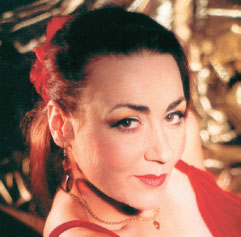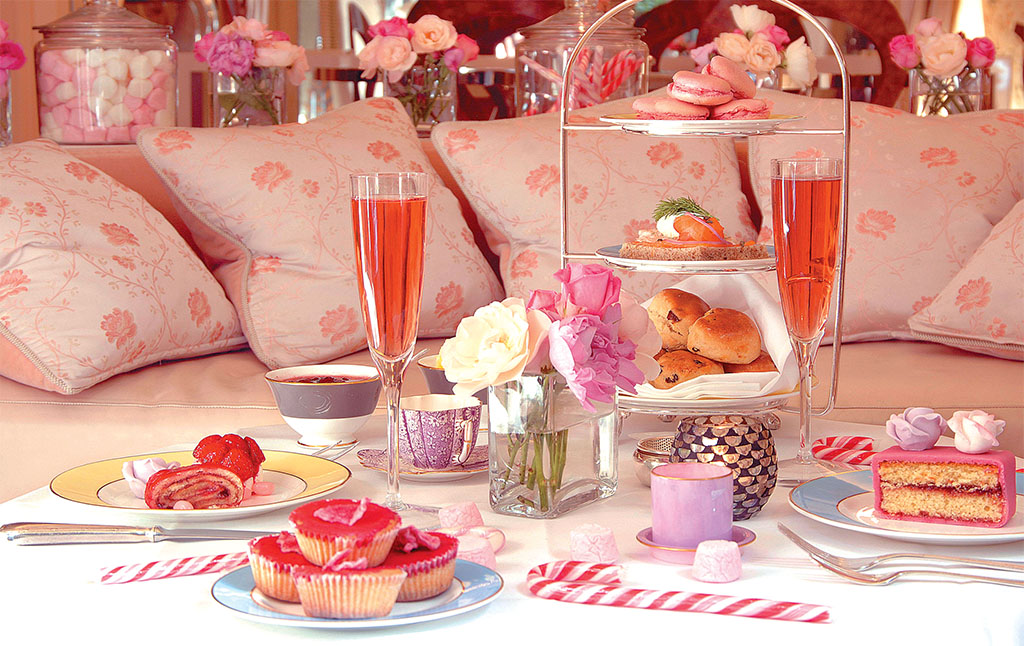
[caption id="PinkTeaintheGardenRoom_img1" align="aligncenter" width="241"]

Most tourists go on a boat trip at some point, but it’s not always the best way to see the river. Thames Clippers, the commuter river service, has just acquired four funky new boats and I’ve been choosing to travel by water as often as I can for the last month or so. Even at rush hour I can get a seat, often by the window, as the regulars prefer to sit in the middle with their laptops and newspapers. This is something I don’t understand at all—there is always something new to see on the river. Sadly, although the clippers are listed as part of the London Transport system, they are run by a private company, so you can’t use Oyster or travel-cards. It’s worth getting a timetable and checking which piers the services stop at. Don’t be surprised to see no one waiting—people suddenly appear out of nowhere when boats are due. Clippers run every 15 minutes during the day, but they end earlyish in the evening, except for the very fast, nonstop service to and from the O2 Arena at Greenwich. It’s not the fastest way to travel, as the river bends, but definitely the most interesting, historic and authentic.
THAMES CLIPPERS
www.thamesclippers.com
Itook a boat to visit the almost unknown Wilton’s Music Hall (walking from Tower Pier, through St. Katherine’s Dock). The oldest remaining intact music hall, you have to see Wilton’s to really understand its dusty, crumbling grandeur. Everything is original—from the apron stage to the barley-twist columns holding up the gallery—and it looks like it. The theater has had so many near misses—from two world wars to sundry wreckers’ balls—it almost beggars belief that it has survived at all, and it is hardly surprising that the famous music hall is in the state (very, very endangered) that it is.
WILTON’S MUSIC HALL
Grace’s Alley, off Ensign Street London, E1 8JB
Bare brick and crumbling plaster, held up with braces and struts it may be, regular ceiling-collapses in the offices upstairs it may have, but this remains, just about, a working venue—holding a handful of shows a year. Beg, borrow or steal to get to any of them, merely for a sight of this incredible place. Despite being entirely surrounded by modern housing estates, from its authentic Dickensian exterior (where you could imagine meeting Bill Sykes on a dark night) to the very boards themselves (where the original Champagne Charlie made his name), this is the real deal. I notice that there is currently a season of talks—all by very well-known speakers. My favorite seats are at the back of the gallery.
THE FOUNDLING MUSEUM
40 Brunswick Square, London W1J 7BJ
This month, two years after its opening, I at last managed to visit The Foundling Museum. The story this tiny, secret, little Bloomsbury museum tells stirs the emotions in ways I had not foreseen. Thomas Coram was, frankly, a nobody—just an ex-sea captain who wanted to make a difference to the 1,000-plus abandoned babies he saw in the streets of early 18th-century London. He wanted to build a hospital for them, but having no real funds of his own, he needed cash. In a shrewd move, instead of targeting the influential men of his day, Coram approached their wives, the ladies-who-lunched, who were desperate for a fashionable project they could latch onto. It helped that Coram had two extremely cool friends on board to tempt the ladies.
The quintessential London artist, William Hogarth, suggested starting an art gallery at the hospital to raise funds. As well as donating several of his own works, he persuaded all his mates to join in—Gainsborough and Reynolds being just two. It became London’s first public art gallery, and the works are still there. Hogarth was always coming up with great ideas—he once raffled a painting for the orphans, where by some amazing coincidence the hospital not only got the money but actually won the painting too.
The other influential friend was George Frideric Handel, who held performances of The Messiah at the hospital in an 18th-century equivalent of LiveAid. They were so popular that the gentlemen were forced to leave their swords and the ladies the hoops from their skirts outside.
Being an orphan in those times was tough, and the museum doesn’t skate over the fact. There’s a representation of the lottery that desperate “fallen women” had to enter to try to get a place for their child, and, even more harrowing, examples of the tokens they left with their children on the off-chance that they might one day be able to reclaim the kids. Few ever did. It is a charming museum for a day when the national collections just seem too big.
Another place I had been passing for years but never been inside, is the niche-themed Garlic & Shots bar in Frith Street. It warns before you go inside that there is not one single item on the menu that doesn’t include garlic. I visited this place with a jolly bunch, including your esteemed editor, and it really is best for groups. The food is of the snack-y tapas-y variety, perfect for ordering lots of different courses and all piling-in together. The drinks are the scariest—garlic vodka is definitely not for the faint of heart—but nothing is what one could call subtle. It is all, however, extremely tasty.
GARLIC & SHOTS
14 Frith Street, Soho
[caption id="PinkTeaintheGardenRoom_img2" align="aligncenter" width="1024"]

COURTESY OF THE ATHENAEUM HOTEL
From the ridiculous to the sublime, I went a few days later to the five-star Athenaeum Hotel in Picadilly, to sample their tea. I spend a lot of my life trying to find the perfect afternoon tea. I try to avoid the obvious venues—which tend to get very touristy and where the service can become either snooty or slapdash—and test out the less well-known places. The Athenaeum has recently been refurbished and now serves a classic English “Pink Tea.” It’s wonderfully girly, with a rosy theme throughout—from salmon finger-sandwiches to delightful little pink-iced cakes and the obligatory strawberry scones. I also visited just before Christmas when they had “tweaked” the menu so that the pink champagne had a dash of cinnamon in it, and the cakes included mini chocolate logs and pastel marzipan delights. Very sophisticated. I will report in months to come of other tea-testings.
THE ATHENAEUM HOTEL
116 Picadilly, London WC1N 1AZ
All my London reviews so far have necessitated an actual trip to the capital, but I really should mention a Web site that I love so much I’ve made it my homepage. London Daily Photo is not a classic “photographic” site of gorgeous artistic shots, but really different alternative views of London. Photographer Ham posts something every day which really sums up life here—people, places, unusual vistas—the things that make this town so exciting. The pictures are not always the stuff that would win competitions, but they are never less than thought-provoking, and often inspire me to visit something I wouldn’t have otherwise known.
LONDON DAILY PHOTO
www.londondailyphoto.blogspot.com
Next time, I shall be going south to discover one of London’s most intriguing collections, checking out somewhere cool for lunch and visiting the capital’s most inauthentic dinosaur.
THIS MONTH’S CONTACTS
Thames Clippers
www.thamesclippers.com
Wilton’s Music Hall www.wiltons.org.uk
The Foundling Museum
www.foundlingmuseum.org.uk
Garlic & Shots www.garlicandshots.com
The Athenaeum Hotel
www.athenaeumhotel.com
London Daily Photo
www.londondailyphoto.blogspot.com
[caption id="PinkTeaintheGardenRoom_img3" align="aligncenter" width="720"]

BLUE MARBLE MAPS, LLC





Comments